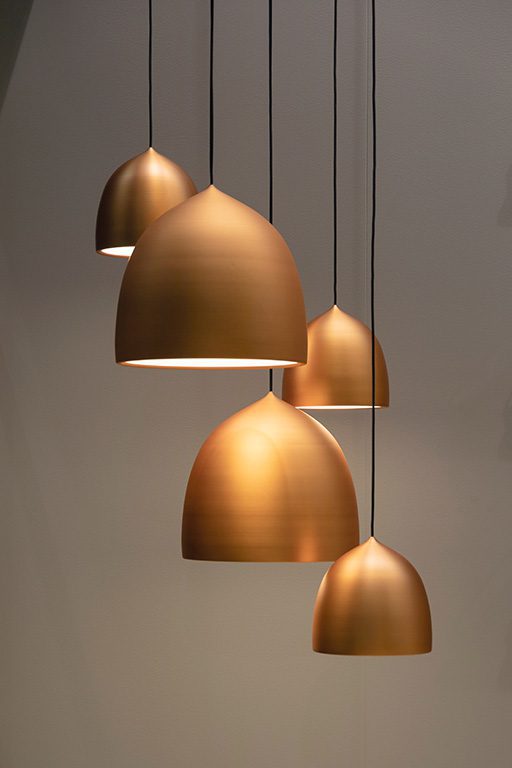Lamp shades are an essential part of any room, providing both functional and aesthetic benefits. Not only do they diffuse light and create a warm ambiance, but they can also add a pop of color or style to your space. Unfortunately, finding the perfect lamp shade can be challenging, especially if you have specific requirements. That’s where DIY lamp shades come in. Making your own lamp shade can be a fun and rewarding project, but it’s not without its challenges. In this article, we’ll explore the pros and cons of DIY lamp shades, so you can decide if it’s the right choice for you.
Pros of DIY Lamp Shades
Creative Freedom
One of the biggest advantages of DIY lamp shades is the creative freedom it offers. Instead of settling for a pre-made lamp shade that doesn’t quite fit your style or decor, you can create a unique design that perfectly matches your vision. DIY lamp shades allow you to experiment with different shapes, sizes, colors, and textures to find the perfect combination for your space. Whether you’re looking for a minimalist design or a bold statement piece, the possibilities are endless.
Cost-Effectiveness
Another benefit of DIY lamp shades is the cost-effectiveness. Pre-made lamp shades can be expensive, especially if you’re looking for a high-quality, designer option. Making your own lamp shade allows you to save money on materials and potentially repurpose items you already have at home. You can also choose materials that fit your budget and style, rather than being limited by the options available in stores.
Personal Touch
Finally, DIY lamp shades allow you to add a personal touch to your space. By creating a lamp shade yourself, you can infuse your personality and style into the design. Whether you choose to add embellishments, paint a unique pattern, or use a fabric that has special meaning to you, your DIY lamp shade will be a reflection of your creativity and individuality.
Cons of DIY Lamp Shades
Time-Consuming
One of the biggest downsides of DIY lamp shades is the time commitment. Making a lamp shade from scratch can be a time-consuming process, especially if you’re not experienced in DIY projects. You’ll also need to factor in time for planning, sourcing materials, and cleaning up. If you’re short on time, DIY lamp shades may not be the best option.
Skill Level Required
Another challenge of DIY lamp shades is the skill level required. Depending on the complexity of your design, you may need some basic sewing or crafting skills to complete the project. If you’re a beginner, it’s important to choose a design that matches your skill level and to take your time with each step. If you’re not confident in your abilities, it may be best to start with a simpler project or consider buying a pre-made lamp shade.
Potential for Mistakes
Finally, DIY lamp shades come with the risk of making mistakes. Whether it’s cutting the fabric too short, using the wrong materials, or not measuring correctly, there are many opportunities for errors. While mistakes are a natural part of the DIY process, they can be frustrating and potentially costly if you need to start over. It’s important to take your time, follow instructions carefully, and be patient with yourself throughout the process.
Materials and Tools Needed for DIY Lamp Shades
Before starting your DIY lamp shade project, it’s important to gather all the necessary materials and tools. The specific items you’ll need will depend on your design and the materials you choose, but here are some general items to consider:
Materials:
- Lampshade frame
- Fabric (cotton, linen, silk, or other material of your choice)
- Adhesive (fabric glue or double-sided tape)
- Embellishments (optional)
Tools:
- Scissors
- Ruler or measuring tape
- Pencil or fabric marker
- Sewing machine or needle and thread
- Iron and ironing board
- Hot glue gun (optional)
Design Options for DIY Lamp Shades
When it comes to DIY lamp shades, the design options are only limited by your imagination. Here are some of the design options to consider:
Shape
The shape of your lamp shade will play a big role in its overall look and feel. You can choose from a variety of shapes, including drum, bell, empire, oval, and square. The shape you choose will depend on the style of your lamp base and the overall look you’re going for.
Size
The size of your lamp shade will also impact its appearance. You’ll need to measure the height and width of your lamp base to determine the appropriate size for your shade. Keep in mind that a larger shade will diffuse more light and create a softer glow, while a smaller shade will create a more focused beam of light.
Color
The color of your lamp shade can also have a big impact on your space. You can choose a fabric that matches your existing decor, or go for a bold pop of color that adds a fun element to your room. Keep in mind that lighter colors will allow more light to pass through, while darker colors will create a more dramatic effect.
Texture
The texture of your lamp shade can also add interest to your space. You can choose from a variety of textures, including smooth, rough, shiny, or matte. You can also experiment with different fabrics, such as burlap, velvet, or lace, to create a unique texture.
Customization Options for DIY Lamp Shades
In addition to design options, DIY lamp shades also offer plenty of customization options. Here are a few ideas to consider:
Adding Embellishments
Adding embellishments to your lamp shade can give it a unique and personalized touch. You can add trim, tassels, beads, or other decorative items to your lamp shade to create a one-of-a-kind look.
Painting
If you want to add a pop of color or pattern to your lamp shade, painting is a great option. You can use fabric paint or spray paint to create a unique design. Just be sure to use a paint that is safe for use on fabric.
Stenciling
Stenciling is another option for adding a pattern or design to your lamp shade. You can create your own stencil or purchase one online. Use a stencil brush and fabric paint to apply the design to your lamp shade.
Step-by-Step Guide to Making a DIY Lamp Shade
Now that you have an understanding of the pros and cons, materials and tools, and design and customization options for DIY lamp shades, it’s time to get started. Here’s a step-by-step guide to making your own lamp shade:
- Measure the height and width of your lamp base to determine the appropriate size for your shade.
- Choose a lampshade frame that matches your desired shape and size.
- Cut your fabric to the appropriate size, leaving an extra inch on each side for seam allowance.
- Iron the fabric to remove any wrinkles.
- Apply adhesive (fabric glue or double-sided tape) to the top and bottom edges of the fabric.
- Carefully attach the fabric to the lampshade frame, smoothing out any wrinkles or bubbles as you go.
- Fold the excess fabric over the top and bottom of the frame, securing it with adhesive.
- Add any embellishments, painting, or stenciling as desired.
- Attach the lamp shade to your lamp base and enjoy!
Tips for Successful DIY Lamp Shade Projects
Here are a few tips to keep in mind as you embark on your DIY lamp shade project:
- Take your time and be patient throughout the process. Rushing or cutting corners can lead to mistakes.
- Choose a design that matches your skill level. If you’re a beginner, start with a simple design and work your way up.
- Use high-quality materials to ensure your lamp shade lasts.
- Measure twice, cut once. Double-check your measurements before cutting your fabric.
- Experiment with different fabrics and embellishments to create a unique look.
- Have fun and enjoy the process!
Alternatives to DIY Lamp Shades
If DIY lamp shades aren’t for you, there are plenty of alternatives to consider. Here are a few options:
Buying Pre-Made
You can find a wide variety of pre-made lamp shades in stores or online. This is a good option if you’re short on time or don’t want to invest in all the materials and tools needed for a DIY project.
Custom-Made
If you’re looking for a unique lamp shade but don’t want to make it yourself, consider hiring a professional to create a custom-made shade. This can be more expensive than buying pre-made, but it allows you to create a design that is perfectly tailored to your space.
Conclusion
DIY lamp shades can be a fun and rewarding project, offering creative freedom, cost-effectiveness, and a personal touch. However, they also require time, skill, and patience, and come with the potential for mistakes. Before embarking on a DIY lamp shade project, consider the pros and cons, gather all the necessary materials and tools, and choose a design that matches your skill level. With careful planning and execution, you can create a beautiful and unique lamp shade that adds style and personality to your space.
Click to Learn More!


